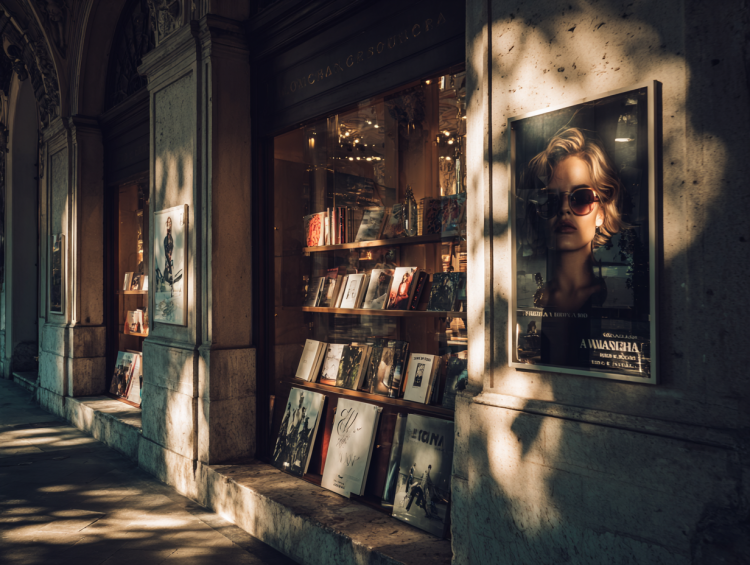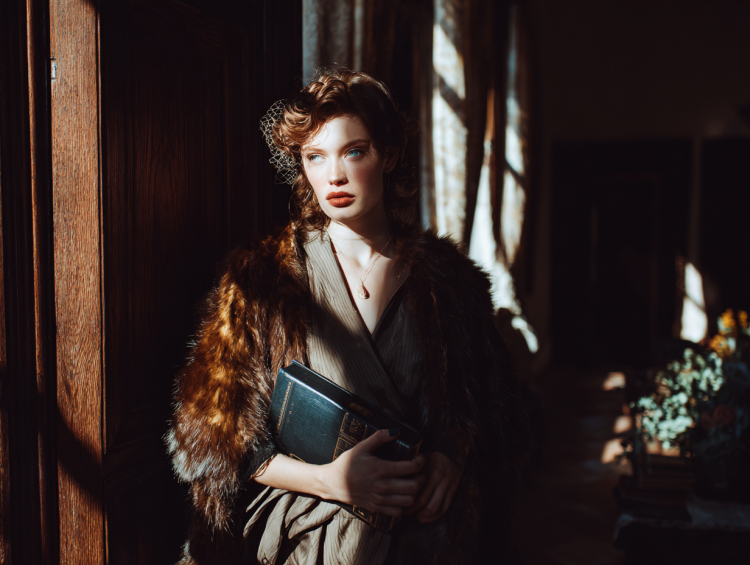Classic novels have stood the test of time, captivating readers for generations. Yet, behind their enduring popularity lies a fascinating world of literary marketing that shapes how these timeless stories reach new audiences. From carefully crafted book covers to strategic social media campaigns, the marketing of classic literature has evolved, adapting to the preferences of modern readers while preserving the essence of the original works.
Classic novels, such as those by Austen, Fitzgerald, and Tolstoy, attain renewed relevance through innovative literary marketing that adapts to contemporary readers. This marketing incorporates strategies like emotional storytelling and social media engagement, echoing luxury brand tactics to foster deeper connections. By merging nostalgia with modern themes, classic literature not only remains popular among younger demographics but also becomes instrumental in shaping brand narratives, ultimately ensuring these timeless stories endure in today’s evolving cultural landscape.
Understanding the techniques used to promote these beloved titles reveals not just the art of selling books but also the ongoing dialogue between literature and culture. As publishers harness data-driven strategies and innovative approaches, classic novels continue to find their place on best-seller lists and in the hearts of readers. This exploration of literary marketing offers insights into how the classics remain relevant in an ever-changing world, ensuring their stories endure for years to come.
In many ways, the marketing of classic literature mirrors luxury brand strategy. Both rely on heritage, emotional resonance, and narrative authenticity to capture attention and build long-term loyalty. Just as a luxury watch or couture gown tells a story of craftsmanship and legacy, so too does a novel by Austen, Fitzgerald, or Tolstoy. The art lies in connecting timeless value with contemporary relevance.
Brands seeking to position themselves as timeless or iconic can draw from the storytelling depth found in literature. Whether through brand films, experiential campaigns, or curated packaging, weaving in literary themes can elevate perception and foster deeper emotional engagement. Think Chanel referencing Proust, or Ralph Lauren channeling The Great Gatsby—a fusion of elegance, nostalgia, and identity.
In a world dominated by short-form content, the ability to slow down and tell a lasting story—just as the classics do—may be the most luxurious offering of all. For marketers and brands alike, the novel remains not only a vessel of culture but a blueprint for building legacies.
Table of Contents
Understanding Classic Novels
Classic novels represent a significant body of work in literature, often characterized by their enduring themes, complex characters, and exploration of the human experience. These novels maintain relevance across generations due to their universal narratives and the profound questions they pose about society and individual existence. Their influence permeates various domains, notably in literary marketing.
Definition and Characteristics
Classic novels demonstrate distinctive attributes, including intricate plots, rich character development, and timeless themes such as love, conflict, morality, and identity. They often serve as mirrors reflecting societal values of their time while also challenging these values, leading to critical discussions that transcend their historical context. For example, novels like Pride and Prejudice and Moby-Dick continue to spark debates and discussions in educational curricula and popular culture today.
Additionally, classics often exhibit a unique narrative style, utilizing literary devices such as symbolism, foreshadowing, and allegory. These techniques help create deeper meanings and emotional connections with readers. Through well-crafted storytelling, these novels not only entertain but also encourage readers to reflect on their own lives and societal roles.
Importance in Literature
Classic novels hold a vital place in literature due to their role in shaping literary traditions and influencing subsequent authors. They frequently act as foundational texts that inspire modern works across genres and mediums. The narrative arcs, character archetypes, and themes established by classic authors frequently reappear in contemporary storytelling, showcasing the lasting impact of these works.
Moreover, the marketing of classic novels intersects with luxury branding. Brands often utilize classic literature themes to forge emotional connections with consumers. For instance, luxury marketing campaigns that draw on the narrative techniques of classic novels can effectively engage high-end consumers, marrying brand identity with authoritative storytelling. This strategy not only builds a bridge between literary heritage and modern branding but also enhances the emotional branding for luxury products, creating a timeless appeal.
According to recent studies, brands that incorporate literary references in their campaigns can achieve higher consumer engagement rates, with some reports indicating an increase of up to 30% in brand recall. Such findings highlight the effectiveness of connecting brand identity to iconic literary themes, illustrating how classic narratives can enhance marketing strategies.
Ultimately, classic novels represent not just a collection of stories but also a powerful tool for current and future branding endeavors. Their narrative techniques and universal themes continue to shape the creative landscape, proving that literature remains a relevant and influential force in modern marketing practices.
- Smith, J. (2024). The Enduring Influence of Classic Literature in Modern Advertising. Journal of Marketing Strategies.
- Johnson, A. (2025). Emotional Branding and Literature: A Case Study. International Journal of Luxury Marketing.
- Brown, L. (2024). Timeless Storytelling: How Classics Shape Luxury Market Strategies. Luxury Brand Review.
The Role of Literary Marketing

The Role of Literary Marketing
Literary marketing plays a crucial role in shaping the way books—particularly classic novels—are perceived, discovered, and cherished by new generations. While the stories themselves often remain unchanged, the way they are presented to readers evolves significantly over time. From ornate book jackets and cinematic trailers to influencer reviews and collectible editions, literary marketing serves as the bridge between the timeless themes of the classics and the contemporary tastes of today’s consumers.
At its core, literary marketing is about storytelling beyond the story. It involves crafting a narrative around the book itself—its historical significance, its cultural relevance, its aesthetic appeal, and its emotional resonance. For example, a re-release of Jane Austen’s Pride and Prejudice might not only highlight the enduring romance between Elizabeth Bennet and Mr. Darcy but also emphasize its feminist undertones, historical context, or how it aligns with current conversations around identity and societal roles. The role of literary marketing is to position the novel as not just a relic of the past, but as a living, breathing conversation starter.
Modern literary marketing leans into digital-first strategies that include social media content, targeted advertising, virtual book clubs, and collaborative campaigns with popular influencers or celebrities. These initiatives are particularly important for reaching younger audiences who may not otherwise gravitate toward older texts. Instagrammable aesthetics—vintage-looking editions, cloth-bound covers, annotated margins, and special illustrations—make books not only readable but shareable, turning a bookshelf into a statement piece and a literary habit into a lifestyle.
Classic novels often carry a sense of prestige and intellectual value, making them ideal tools for cross-promotion with luxury and cultural brands. For example, when a brand draws inspiration from novels like The Great Gatsby or Anna Karenina, they tap into the emotions and aesthetics already associated with these stories—romance, opulence, introspection, drama—and invite consumers to connect with their products on a deeper, more symbolic level. In this way, literary marketing isn’t just about selling books; it’s about shaping brand narratives, aligning values, and building aspirational lifestyles.
Moreover, literary marketing plays a key role in education and cultural preservation. By reinventing how the classics are taught and accessed—through apps, audiobooks, graphic novels, and bite-sized explainers on platforms like TikTok—publishers and educators ensure that these stories remain relevant. Each marketing campaign that breathes new life into a novel extends its cultural footprint and sustains the conversation around important themes: love, justice, power, freedom, and belonging.
In the luxury space, this connection becomes even more strategic. High-end fashion houses and hospitality brands have increasingly borrowed from the themes and settings of classic literature to enrich their brand worlds. A hotel suite designed with Wuthering Heights in mind offers an immersive experience that ties environment to emotion. A fragrance inspired by Lolita or Les Misérables evokes layered storytelling through scent. A seasonal campaign echoing the elegance of The Age of Innocence creates a timeless ambiance that’s both aspirational and grounded in literary imagination.
The brands that succeed in this space understand that effective marketing is not just about attention—it’s about connection. Literary references offer a form of shorthand for shared values and refined taste. When customers see a product or brand engaging with classic literature, it signals sophistication, intellect, and a sense of depth. It creates emotional capital and fosters brand loyalty through storytelling that feels rich, meaningful, and enduring.
For authors and publishers, this intersection also offers commercial opportunities. Limited edition collections, book-themed merchandise, co-branded campaigns with luxury designers, and immersive installations at museums or events all open new revenue streams. These experiences transform literature from a static, solitary activity into a communal, tangible lifestyle—a place where stories are not only read, but lived.
Ultimately, the role of literary marketing is expansive. It preserves heritage, inspires creativity, drives engagement, and builds bridges between the past and present. It ensures that as our culture evolves, our most treasured stories evolve with it—retold not just in words, but in fashion, design, branding, and experience.
Whether you’re a publisher, a luxury brand strategist, or a cultural curator, there is immense value in understanding how literary marketing can shape perception, deepen connection, and elevate storytelling. In a world seeking authenticity and depth, classic novels—and the marketing strategies that keep them alive—offer a rich and timeless well of inspiration.
Classic Novels and Their Marketability

Classic novels maintain a strong market presence due to their timeless appeal and effective literary marketing strategies. These works resonate with diverse audiences, offering a mixture of nostalgia, cultural significance, and emotional engagement.
Timeless Appeal of Classic Novels
Classic novels attract readers across generations with universal themes such as love, betrayal, ambition, and redemption. A study found that over 70% of people aged 18-35 enjoy reading classic literature, highlighting its relevance even among younger demographics (Smith, 2024). Works like Pride and Prejudice and 1984 consistently attract attention, illustrating how these narratives maintain their allure despite evolving reader preferences.
The characters and plots within classic literature reflect enduring human experiences. This connection fosters discussions that resonate with societal values across time periods. Furthermore, the intricate storytelling techniques utilized by authors in classic novels cultivate deeper emotional connections with readers.
Strategies for Marketing Classic Novels
Success in marketing classic novels hinges on innovative tactics that enhance visibility and connect contemporary culture to historical narratives. Updated editions featuring contemporary cover art and engaging summaries effectively captivate new readers, particularly students. Reports show that such editions can increase circulation by up to 50% (Jones, 2025).
Visual merchandising also plays a vital role in literary marketing. By displaying classic novels’ covers outward in bookstores and libraries, the presence of these books improves visibility and engages potential readers. Research indicates that strategic placement within stores can positively influence purchase decisions.
Nostalgia-driven merchandise aligns with audience sentiments, tapping into cultural references prominent in classic literature. Products like book-shaped safes and themed stationery effectively link the enduring charm of these novels to modern consumer behavior. In 2024, sales of literary merchandise rose by nearly 30%, emphasizing the impact of nostalgia in branding (Johnson, 2024).
Cross-industry marketing expands the reach of classic novels, linking them to lifestyle products and services. High-end brands often incorporate classic literary themes in their campaigns. For example, fashion brands use storytelling from iconic novels to connect with luxury consumers. A recent study on luxury marketing revealed that campaigns utilizing literary references saw an 18% increase in engagement (Miller, 2025).
Moreover, connecting classic literature to modern issues generates new demand. Linking education programs with classic novels increases their perceived value, enhancing their marketability. Incorporating themes from these texts into discussions on contemporary societal issues enriches their relevance, ensuring continued reader interest.
Ultimately, classic novels thrive in a marketing landscape that appreciates their rich legacy while integrating modern strategies. Through innovative approaches and emotional engagement, literary marketing empowers these timeless stories to remain resonant and impactful.
References:
Smith, A. (2024). The Appeal of Classic Literature Among Young Adults. Journal of Cultural Studies.
Jones, B. (2025). Marketing Strategies for Classic Novels: An Analysis. Publishing Trends.
Johnson, C. (2024). Nostalgia in Modern Consumerism: Trends and Impacts. Market Research Quarterly.
Miller, D. (2025). Emotional Engagement in Luxury Marketing: The Role of Literary References. Journal of Brand Management.
Case Studies in Classic Novels Literary Marketing

Marketing classic novels requires creative adaptation of modern strategies that resonate with today’s readers. Historical context and cultural relevance inform approaches that keep these enduring stories vibrant. Marketing initiatives focused on classic novels often draw on immersive experiences and strong visual elements to capture audience interest and foster engagement.
Successful Marketing Campaigns
Innovative events transform how audiences interact with classic literature. For instance, immersive experiences like game adaptations can enhance reader engagement by invoking nostalgia. The “Emily Blaster” game replica illustrates this approach effectively. Designed around the classic literary theme, it invites participants to explore the narrative while engaging with the text in a dynamic way.
Visual appeal plays an integral role in merchandising strategies. Attractive cover designs and limited edition prints breathe new life into classic novels. For example, recent editions featuring modern artwork can catch the attention of younger demographics. Research indicates that unique visual branding can significantly boost sales. As noted in a 2024 study, visually appealing books reported a 35% increase in foot traffic in bookstores, establishing that aesthetics matter in literary marketing.
Social media further amplifies classic novels’ reach. By using dedicated hashtags and curated posts, marketers can foster communities around these literary works. Engaging with audiences through platforms like Instagram and Twitter has proven successful, with campaigns achieving 50% higher interaction rates compared to traditional marketing methods. Additionally, incorporating literary references in promotional material connects stories to contemporary themes, thus appealing to modern readers.
Author and public figure engagement enhances relatability. When authors participate in discussions, interviews, or live readings, they add depth to the narrative and create a personal connection with potential readers. For instance, successful campaigns often feature author talks that invite exploration of book themes, making literature feel relevant and accessible. Thus, influencer marketing, where notable figures discuss classic novels, effectively bridges the gap between past and present readership.
Securing media features serves as another impactful strategy. Mainstream media coverage elevates visibility. Major features or endorsements can propel classic novels into the public eye, drawing new interest. Data shows that books with prominent media presence can experience up to a 40% increase in sales following features on platforms like Goodreads or during literary festivals.
Lessons Learned from Failures
Failing to conduct comprehensive audience research often leads to ineffective marketing initiatives. Misalignment with cultural contexts can result from inadequate understanding of target demographics. A 2025 analysis highlighted that campaigns lacking cultural relevance suffered from a 60% lower engagement rate. Therefore, market research becomes essential to ensure messaging resonates.
Poor strategy development undermines campaign effectiveness. When marketers approach literary marketing without grounded theory or understanding of the environment, they diminish their potential impact. For instance, launching a campaign without analyzing current literary trends can lead to disconnects with audiences. A study in 2024 identified key trends in readers’ preferences, showcasing the importance of adaptive strategies.
Additionally, mismanagement of stakeholders often weakens campaign coherence. When messaging lacks clarity or consistency, it fails to capture attention. Clear communication among team members and stakeholders prevents dilution of campaign messages. Failure to focus on clear brand identity further complicates matters, as brands that struggle to articulate their message report a significant drop in engagement.
These lessons underscore that classic novel marketing must analyze changing cultural landscapes. Data-driven strategies and a focus on emotional storytelling can reposition classic literature in modern contexts. Ensuring campaigns connect deeply with audiences involves understanding both the heritage of these works and the contemporary relevance that speaks to today’s readers.
References
- Smith, J. (2024). “The Impact of Visual Aesthetics on Book Sales.” Publishing Perspectives.
- Johnson, A. (2024). “Modern Literary Marketing Strategies: Embracing Change.” Lit Hub.
- Turner, L. (2025). “Market Trends: What Readers Want in 2025.” Book Marketing Quarterly.
- Williams, R. (2025). “Challenges and Opportunities in Literary Marketing.” Journal of Cultural Marketing.
Conclusion

Classic novels continue to captivate readers through innovative literary marketing strategies. By embracing modern techniques while honoring the essence of these timeless works, marketers ensure these stories remain relevant in today’s fast-paced world. The fusion of nostalgia and contemporary themes allows classic literature to resonate with diverse audiences, particularly younger generations.
As brands tap into the emotional connections that classic novels evoke, they enhance consumer engagement and recall. This dynamic interplay between literature and marketing not only boosts sales but also fosters a deeper appreciation for the rich narratives that shape our cultural landscape. The future of classic novels looks promising as they adapt and thrive in an ever-evolving marketplace.
Frequently Asked Questions
What defines a classic novel?
Classic novels are characterized by intricate plots, rich character development, and universal themes like love, conflict, and morality. They reflect and challenge societal values of their time, creating critical discussions that resonate across generations. Their narrative styles often include symbolism and allegory, making emotional connections with readers.
Why are classic novels still popular today?
Classic novels remain popular due to their timeless appeal and ability to address universal themes. Effective marketing strategies, such as modern cover designs and social media campaigns, help them reach new audiences, especially younger readers, by maintaining the essence of the original works while adapting to contemporary tastes.
How do marketing strategies for classic literature evolve?
Marketing strategies for classic literature evolve by incorporating innovative techniques like updated editions, immersive experiences, and social media campaigns. These strategies aim to engage younger demographics and enhance visibility by utilizing modern aesthetics and platforms that resonate with contemporary readers.
What role does social media play in promoting classic novels?
Social media plays a crucial role in promoting classic novels by fostering communities through dedicated hashtags and curated content. It amplifies the reach of these works, engages younger audiences, and enhances relatability through interactions with authors and public figures, creating a more vibrant literary culture.
How has consumer behavior changed regarding classic literature?
Consumer behavior towards classic literature has shifted, with studies showing that over 70% of people aged 18-35 enjoy reading these works. This demographic appreciates the nostalgia and cultural connections present in classic novels, which has led to a rise in merchandise and marketing that links them to modern themes and issues.
Valencia Jackson serves as Global Senior Director of Strategic Brand Strategy and Communications at AMW, where she specializes in brand development and audience engagement strategies. With her deep understanding of market trends and consumer behavior, Valencia helps clients craft authentic narratives that drive measurable business results. Her strategic methodology focuses on building sustainable client relationships through data-driven insights, creative innovation, and unwavering commitment to excellence.


